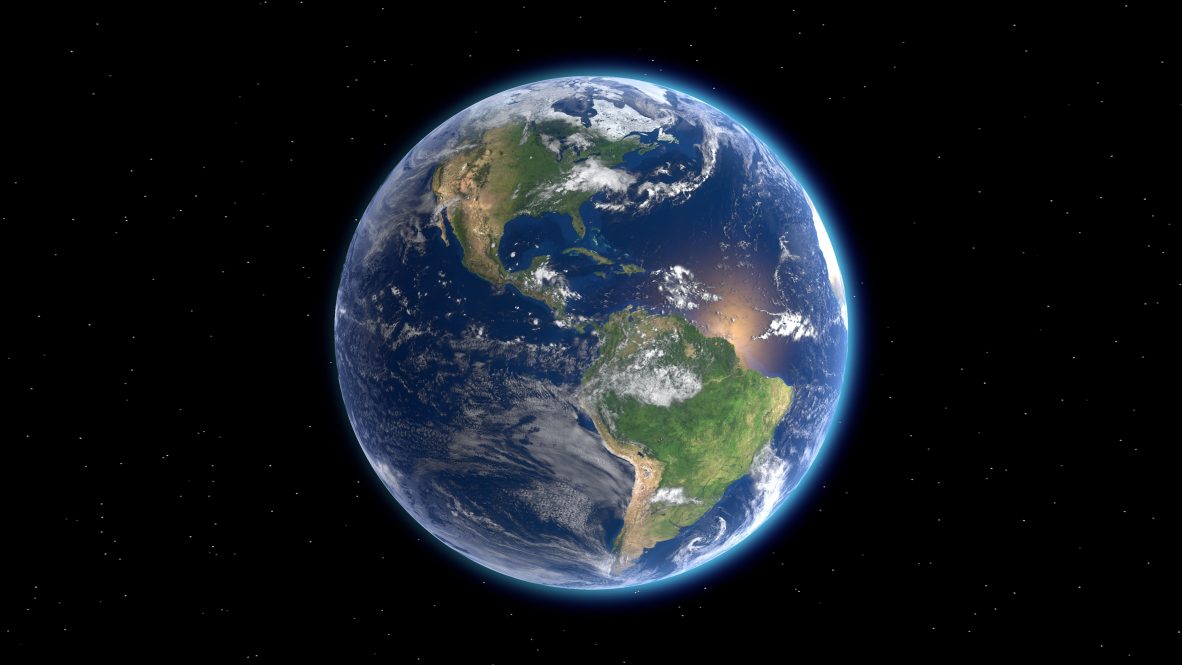Last month, the United Nations Intergovernmental Panel on Climate Change (IPCC) released the Sixth Assessment Report: Climate Change 2021: The Physical Science Basis (AR6). The report details a troubling outlook and was met with a flood of emotions ranging from anger to fear to helplessness from people around the world.
Robert Thorson, professor in the Department of Geosciences, likens it to receiving health news that you’re confused about, and he reminds us how important knowledge is for processing and moving forward when presented with a challenge.
“We have a pretty good idea of how our bodies work. Imagine dealing with things like anemia, childbirth, osteoporosis, human development, etcetera without having a clue how the human body works, for instance the knowledge of bones, muscles, digestion,” he says. “Information would just come at you and you would have to take each threat at face value, rather than really understand them as a whole. Instead, most of us understand the basics of medicine because our K-12 education system has taught us how the body works as a system of subsystems.”
This is not the case when it comes to earth systems; for example, the ways tectonics, magnetics, soils, atmospheres, earthquakes, landscapes, and aquifers act together to create earth’s present moment in its deep time history. Though climates manifest at the earth’s surface, they actually come from underground via the tectonic arrangements of continents and oceans and the carbon exchanges between the earth’s crust and its atmosphere. Thorson argues that what we need now is something he calls “Whole-Earth Environmentalism.”
While it is important to understand Earth’s biological components, Thorson points out it is also important to understand that the deeper geological framework creating those components. Objects like mountain ranges, isthmuses, islands, and ocean basins combine to create the habitats and regional climates that drive evolution. Nothing happens in isolation and geological phenomena in one area can have far-reaching impacts.
The changes in the earth system set the stage for everything else. We cannot look at this in a reductionist way. — Robert Thorson
“For example, as Antarctica migrated over the South Pole, it became glaciated beginning about 34 million years ago,” Thorson says. “This tectonic event created the geography, which created the climate, which dropped global sea level by more than 100 meters and sent the whole planet into a period of long-term cooling that we’re now just beginning to reverse.”
Thorson argues that our education system focuses so heavily on the biota and human aspects of our planet that it allocates too little time to teach the whole-earth interconnectedness of planetary systems. This makes it difficult to put the AR6 report into context, leading to further anxiety about the future.
While earth experienced great changes in deep time, as illustrated by the story of Antarctica, AR6 details the state of the climate since humans started drastically altering the earth system, starting with the Industrial Revolution and continuing with greater speed since the 1950s. This was the start of a time known as “the great acceleration” in which increasing amounts of carbon continued to be released into the atmosphere, launching us into a new epoch named the Anthropocene.
“We are producing rates of change faster than the Earth is used to experiencing, and that’s a big problem,” Thorson says. “The rate is too high and there’s a lot of disruption taking place as a result. We have to embrace this challenge politically to solve these problems.”
This is where Thorson argues that knowledge of the earth systems comes in handy. He explains that the unfamiliar Earth interior is the bottom half of a giant recycling machine, the familiar top of which includes life, liquid water, and air. What’s new about the current climate crisis is not the upward transfer of fossil carbon, but the extra-high rate of that transfer: ~51 gigatons per year. The release of previously sequestered carbon into the atmosphere is much faster than its withdrawal, thereby rapidly intensifying the greenhouse effect. Carbon concentrations in the atmosphere are now at the highest point humans have ever existed with. Our species is entering new territory. A whole earth approach is needed to understand it.
“The changes in the earth system set the stage for everything else,” says Thorson. “We cannot look at this in a reductionist way.”
In terms of alarming AR6 climate prognoses, Thorson says an understanding of the constant change and dynamics within earth’s systems will go a long way toward helping address the question of “where do we go from here?” Throughout earth history, punctuated, chaotic events eventually lead to a “new normal.” A knowledge-driven, whole-Earth approach can help us to collectively move forward through the Anthropocene, Thorson says.
“The climate crisis is ultimately an educational problem of not knowing how the earth works. Teaching that knowledge makes this a surmountable problem.”
Students interested in learning more about earth systems can consider taking Thorson’s course The Human Epoch: Living in the Anthropocene (GSCI 1000E).



